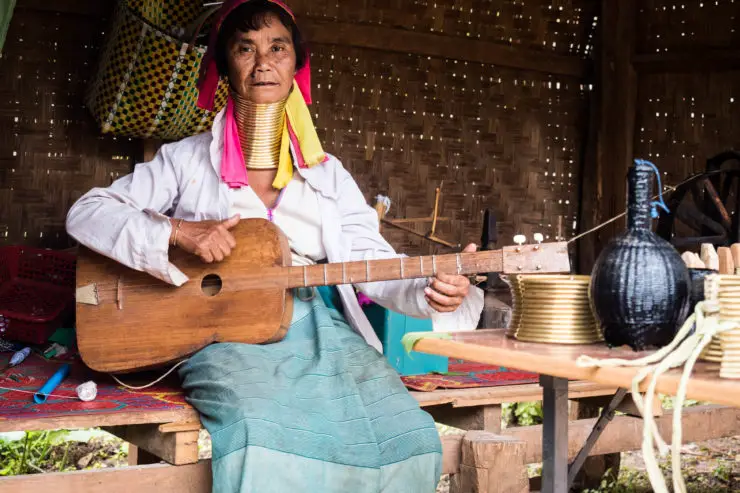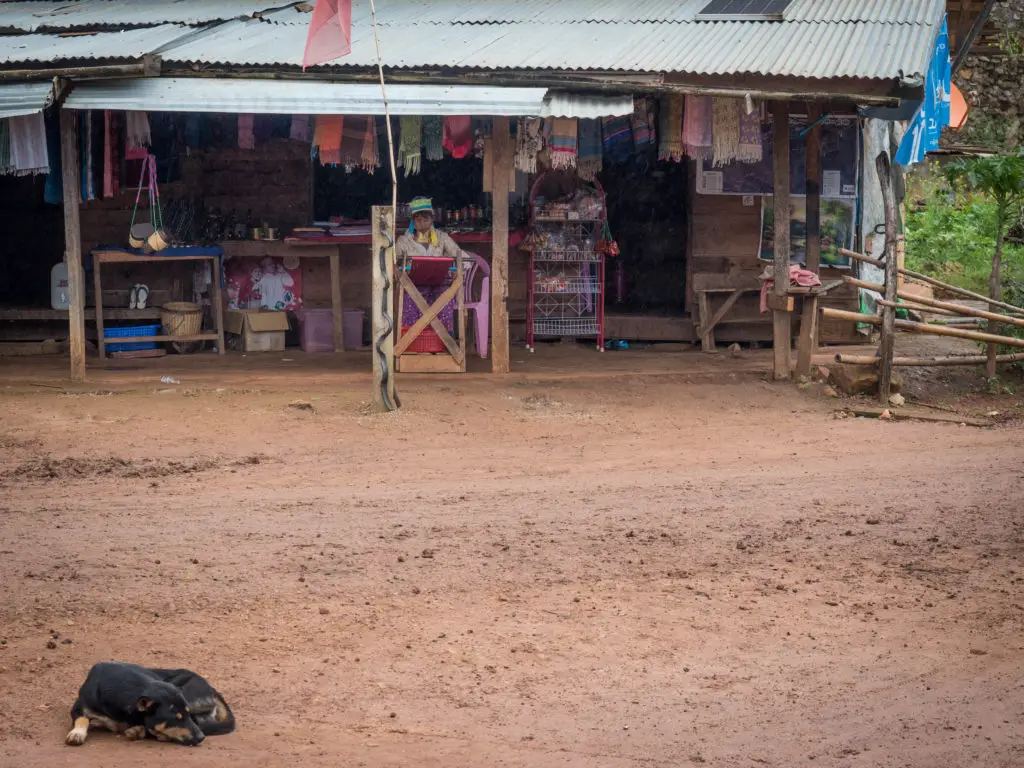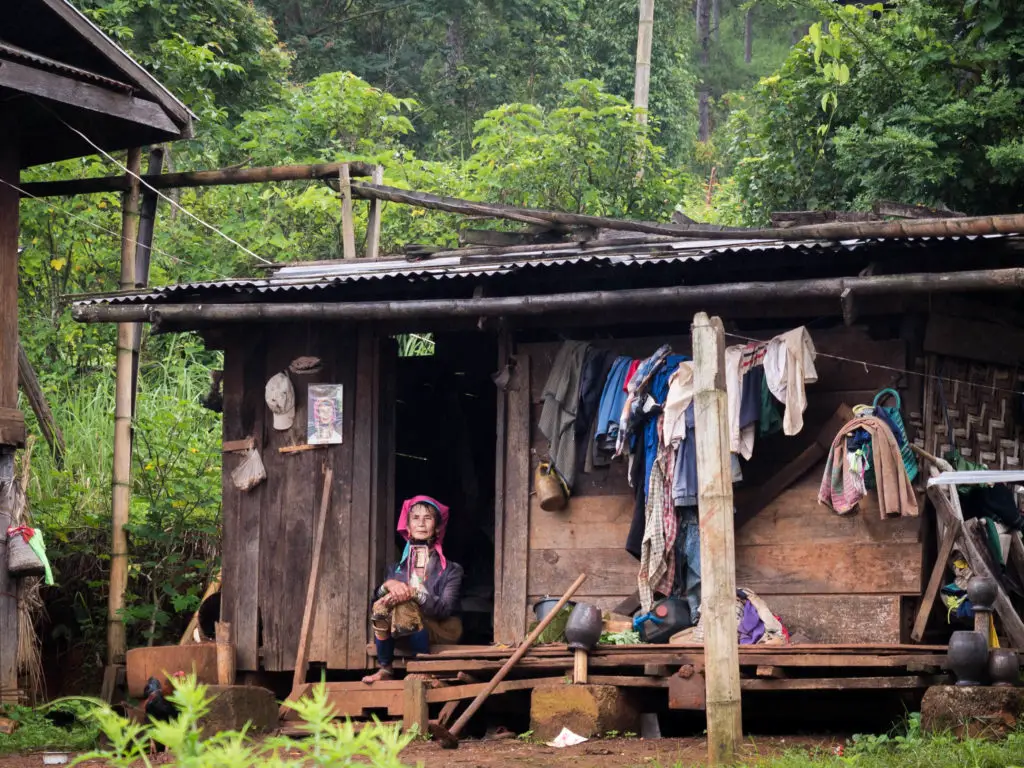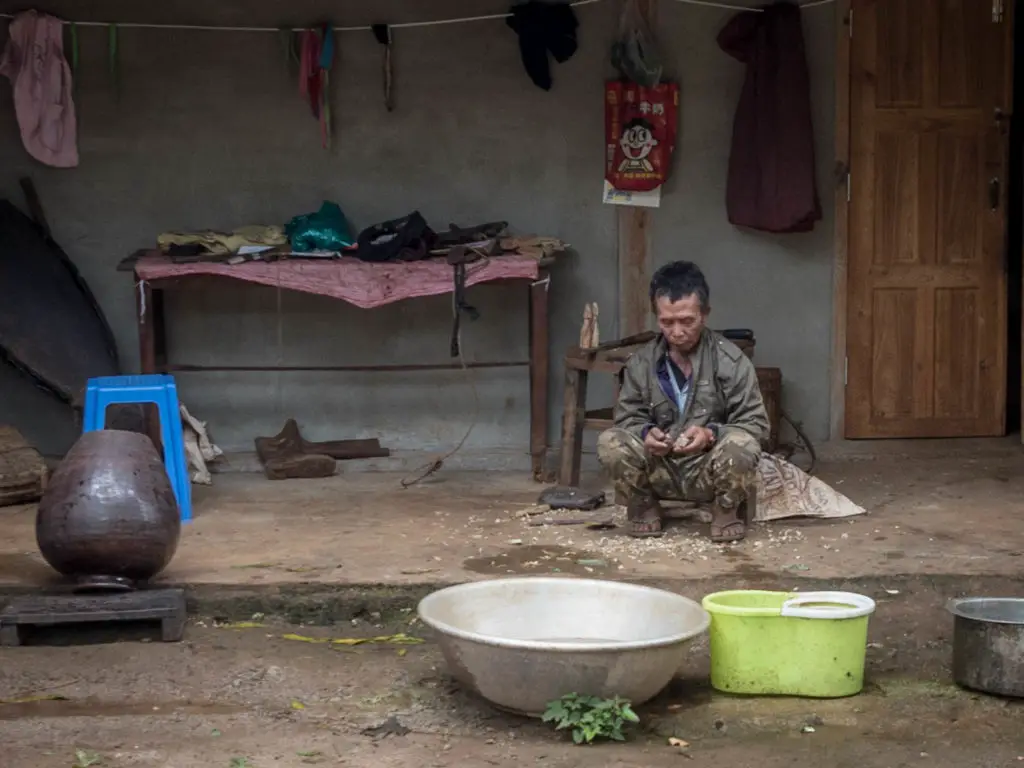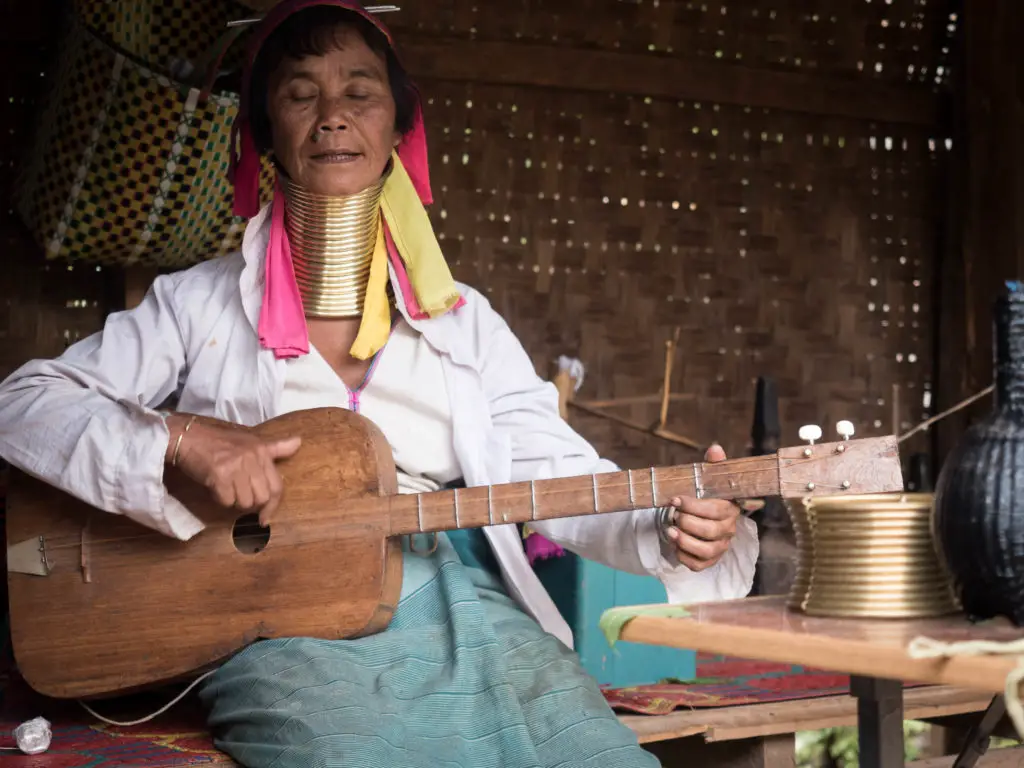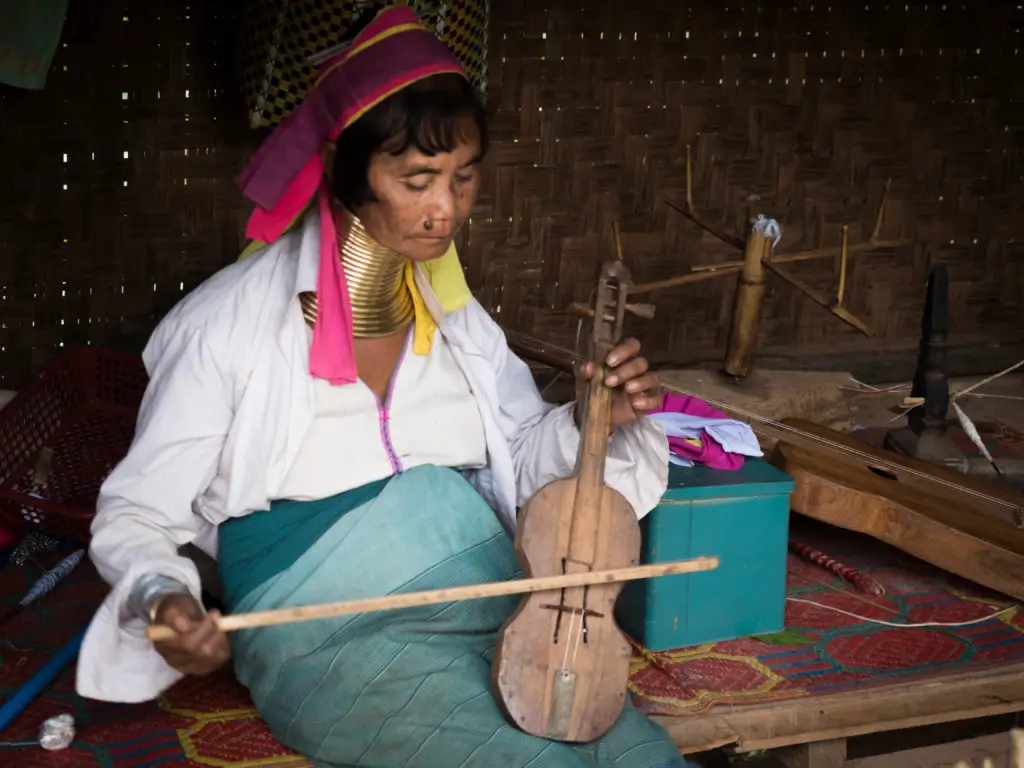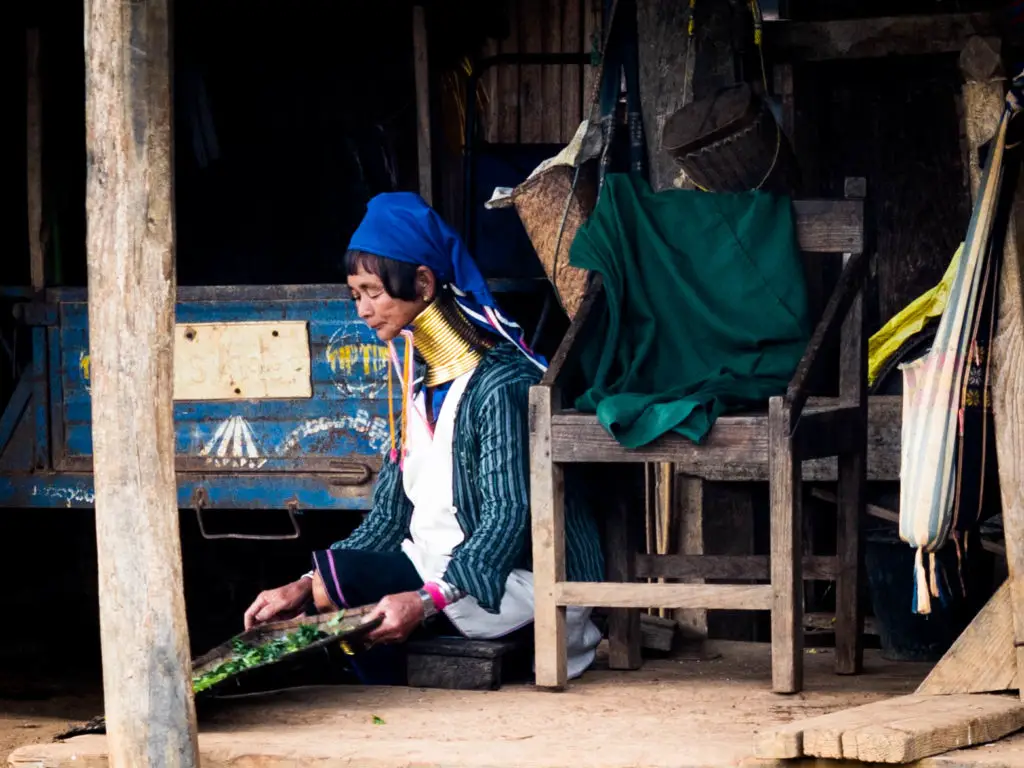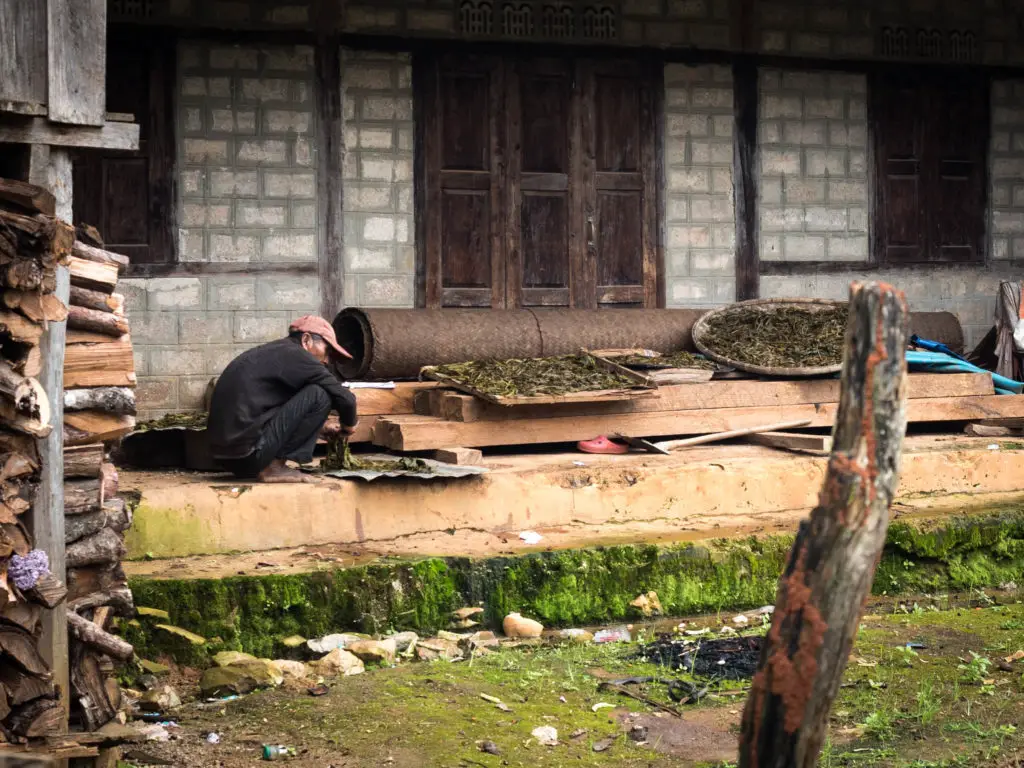As an Amazon Associate I earn from qualifying purchases. Please read the disclaimer for more info.
One of the highlights on our trip to Myanmar was visiting the village area of Pan Pet, where the mysterious Kayan women live. They are sometimes referred to as Padaung women, or the more descriptive, long neck tribe.
Myanmar’s Kayan Long Neck Tribe
The village of Pan Pet is located in the hills not far from the non-descript town of Loikaw. We had based ourselves in Loikaw for 3 days as part of a longer exploration of the area, but it was the Kayan women we had really come to see.
The one-hour drive to the village starts on a narrow bitumen road and ends on a muddy track. On the way we see the diverse agricultural industry of eastern Myanmar with corn and rice being grown in abundance, as well as the tobacco used in the popular cheroot cigarettes and cigars.
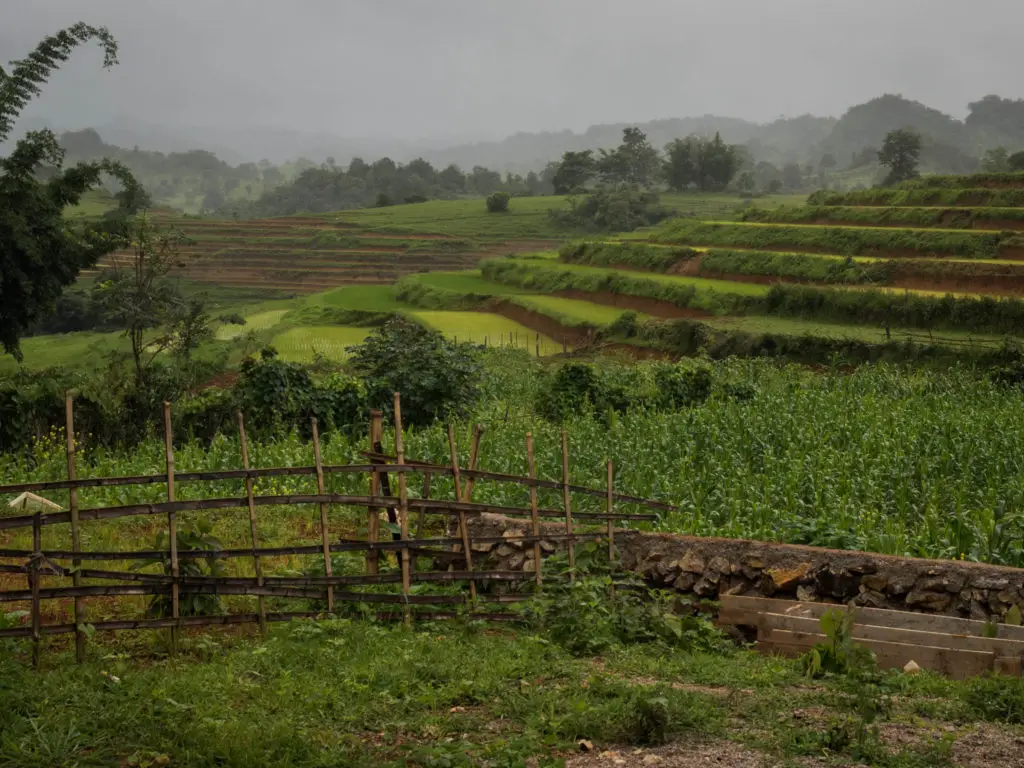
Just out of the village, vegetables and rice are grown. The whole area is green due to the rainy season and there’s an early morning mist over the hills.
We also see glimpses of the everyday lives of the Pa-O people, the main ethnic group in this part of Myanmar. The women are easily spotted by their colourful head scarves and cane or bamboo sling baskets, while the men wear large red sling bags over their shoulders.
It isn’t long before we arrive in the village and immediately into what seems like another world.
Our driver has pulled up straight in front of the village shopping strip, which consists of two small wooden shacks, where some knick knacks and trinkets are for sale, and the general store located just across the muddy road.
The stores are attended by two Kayan women, both with the long necks, and one of them with her child. This is the first close-up encounter I’ve had with the women I have, for some time, been planning to visit.
And to be honest, I find it a little difficult to look at the women. I can feel that I’m being both conscious of not wanting to be insensitive, and to also not wanting to seem to treat them differently to anyone else.
And as a result of my awkwardness, I do treat them differently.
This initial uneasy moment, on my behalf, is solved fairly quickly by deciding to have a look around the village. We indicate we will be back soon, and head off to explore the unknown.
The village is a typical mountainside village, that could be located anywhere in the world. Old houses, some made with wood, beaten by weather and time, children playing games in the mud, livestock residing under houses, and fields of rice paddies and other agriculture.
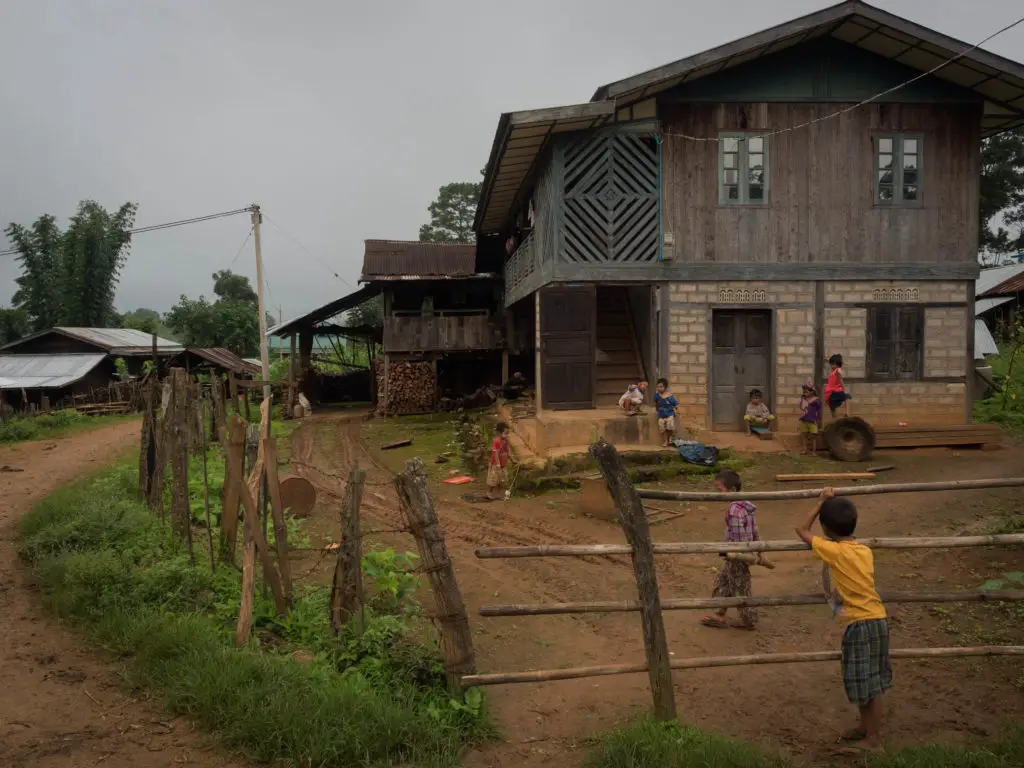
Young children playing in the village. Apart from the odd motorbike, the sound of children was the main noise in the village.
And a gold coloured pagoda at the top of the hill, which may not be so typical.
Apart from the pagoda, the big difference in this village was the sight of the local women, some sitting idly on their balconies, others working in little workshops next to their houses, while a few sat in doorways, or looked out of windows, watching life pass them by.
And they had “long necks”, adorned with shiny rings.
And life on that day was us. There was no other activity on the streets other than the odd motorbike, tractor, or child retrieving a stray football.
Most of the women we saw that day were wearing traditional clothing. A colourful headdress, a white shirt, a simple dress, and leggings. They looked like they wore rings around their necks, but they didn’t.
Their necks were adorned with brass coils, wrapped around in one continuous piece. Some of the women also wore the brass coils around their arms and legs, although I’m not sure if they were brass coils or “just” rings.
On a few of the balconies, and inside the workshops, the women had a few scarves and other items for sale. Some jewellery, a few carvings parodying themselves, some fake neck rings (yep), and a fridge magnet or two.
After a short stroll, we approached one woman, who alongside her daughter, sat in one of the little workshops, a few meters from the main house. They welcomed us in with a warm smile. The daughter was patiently making a scarf using one of those manual wooden weaving machines that I’d only ever seen in “traditional style” demonstrations.
A few finished scarves were draped over a wire that had been strung out along the side of the workshop. They were intricate, and the amount of work involved to make these scarves was obviously quite labour intensive.
The daughter wasn’t wearing the brass coils and looked, for want of a better description, quite normal. She wore thanakha on her cheeks, the Myanmar beauty product of choice, as well as clothes you would expect to see on any young woman.
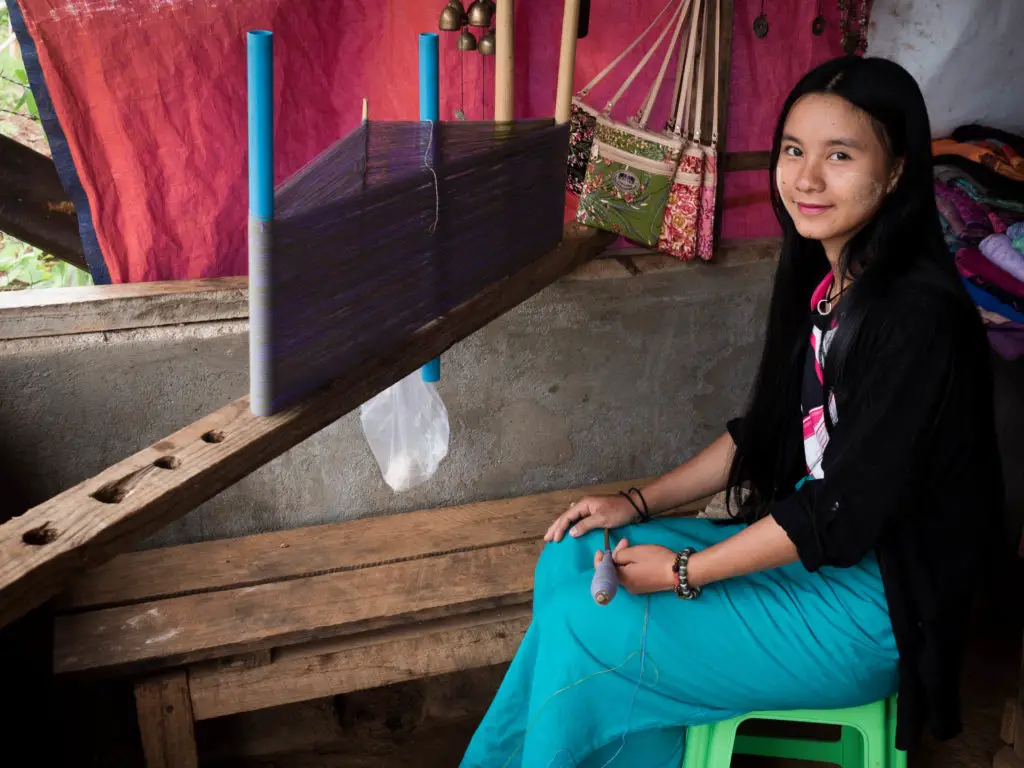
The daughter of one of the long neck tribe women, who has chosen not to wear the brass coils. I didn’t notice at the time, but, as most women do in Myanmar, she is wearing thanaka on her cheeks, the cosmetic powder derived from grinding the wood of the thanaka tree. In retrospect, I didn’t see any of the long neck women wearing thanaka.
We ended up buying a couple of wooden carvings that had been on display on a small table for a few dollars, and moved on in search of another interaction with a friendly local.
We almost missed the next lady who was sitting in her workshop not far from her husband, who was sitting on the house landing whittling away at a piece of wood, which I’m sure was not long for the sales display table sitting conspicuously at the entrance to the workshop for the customers to peruse.
She too, welcomed us with a smile. However, instead of trying to show us her wares, she was keen to pick up an old wooden guitar and sing us a song.
She sang beautifully, in tune, and played the modest guitar serenely. As she performed, I had one of those split second thoughts where I almost had to pinch myself to make sure I was actually experiencing that moment.
It was, in a word, magical.
We bought a small item as a somewhat inadequate appreciation for the moment we had just been privileged enough to witness. I’m certainly not trying to “over egg” the experience, but it was as unexpected as it was great to watch.
We kept on walking through the village to find that the little workshops turned into little food preparation stations. A woman preparing lunch for the extended family, a man sorting through some recently picked green vegetable leaves.
Life in Pan Pet village was more normal than I had imagined, save for the unusual sight of overtly bright brass coils wrapped around the necks of the older generation.
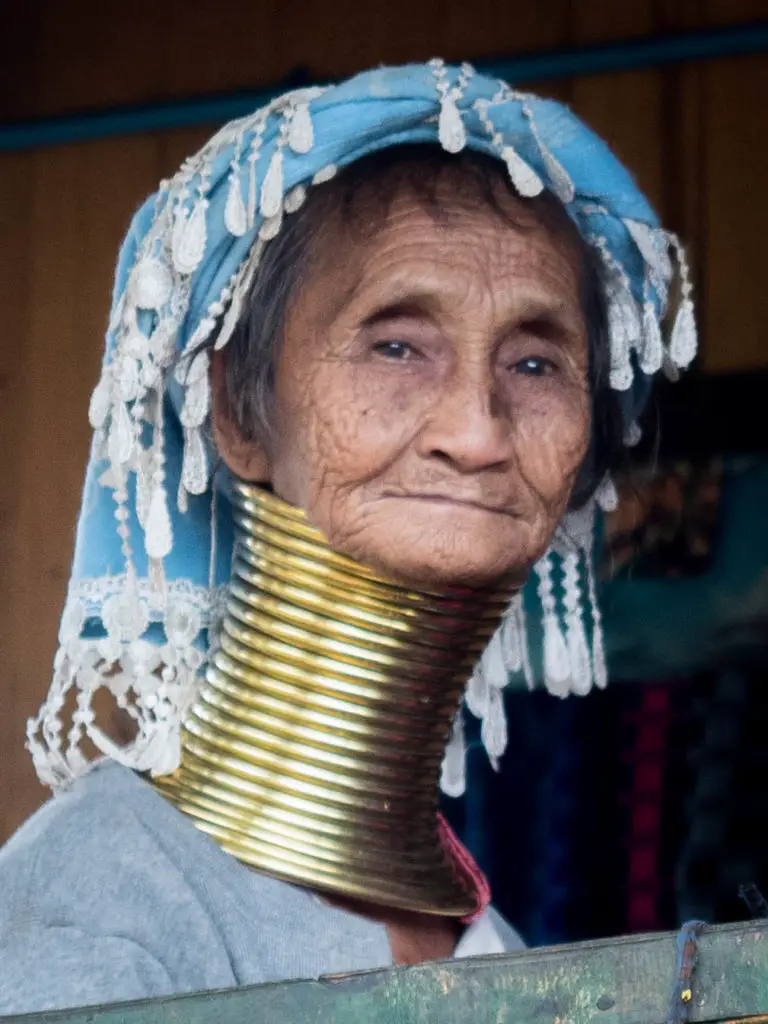
We spent some time sitting with this woman on her balcony. I took this photo from beneath. She was the eldest lady we spoke to that day although we aren’t sure how old she actually was. She had an overwhelming calmness about her.
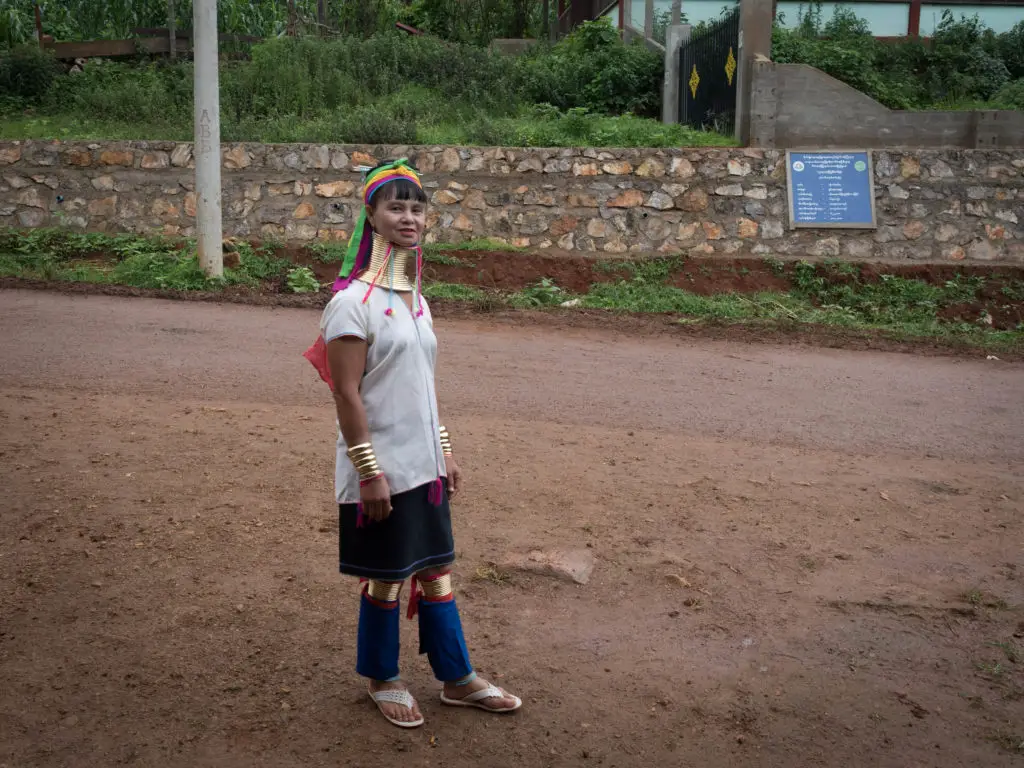
One of the long neck tribe ladies was happy to pose for the camera. In fact, every person we asked for a photo agreed to our request and did so in a patient manner.
I could have stayed in this village a lot longer to try to understand more about the Kayan women and their traditions.
We left without seeing more than a few younger women with the brass coils around their necks, in the realisation that this tradition has a limited lifespan, and we were fortunate to see the Kayan long neck tribe women first hand.
Details for visiting Myanmar’s Kayan Long Neck Tribe
- The village we visited is called Pan Pet, about 30 minutes from Loikaw, in turn a 4-hour drive from Inle Lake (Nyaung Shwe), a popular destination on the Myanmar tourist trail.
- You can only visit the long neck tribe with a local driver. There were police checkpoints along the way. Organising a driver is a straight forward exercise at local hotels, as well as through shops offering tours of the immediate area. We paid $200 for a driver, and comfortable car, for a 3-day exploration the Loikaw area. This included the driver’s accommodation. We visited Pan Pet on our second morning.
Where to stay
- Inle Lake (Nyaung Shwe) – we stayed at an amazing property called Inle Cottage Boutique. The accommodation was super comfortable and the staff as friendly and as helpful as any we’ve come across in Myanmar. It is perfectly located a short walk from all restaurants and the main market. To see a few photos and to check the latest price check here.
- Loikaw – we stayed at Hotel Mingalar, which was centrally located and adequate for our needs. We didn’t find too many options when we searched for hotels in the area and were happy with our choice.
Enjoyed this article? Sign up below to receive future posts straight to your inbox. SPAM free, naturally.

